|
“The phrase, “technology and education” usually means inventing new gadgets to teach the same old stuff in a thinly disguised version of the same old way” – Seymour Papert (1972, as quoted on p. 19) In my initial post, which began this series, I wrote about the introduction to Libow Martinez and Stager’s book Invent to Learn where they gave us a brief overview of the maker movement and its place in society today. In the previous article in this series, looking at the first part of chapter one, we were given an overview of the historical origins of the maker movement and its pedagogical relationships with some of the giants of education including Piaget, Montessori and Dewey. This article will move through the remainder of chapter one, bringing us up to more recent times. Technology often comes across in the media and policy speeches as being some sort of panacea for education, as though decades of low-investment in schools and teachers can be ‘fixed’ by giving students with only a few years left of their schooling a laptop as was the case during the Australian Digital Eduction Revolution. Seymour Papert’s quote above is something that the authors called “…revolutionary for 1968, but sadly remains a perceptive critique of schooling today” (p.19). While technology can be an amazing enabler of creativity and critical thinking, it can only be such if it is utilised in a way that empowers students to be creative and critical thinkers. The current boom in the use of coding in schools, being labelled as a foundation skills that is as important as mathematics and reading only six months ago an article in The Age newspaper, is rather late considering that Seymour Papert and Cynthia Solomon published a paper in 1971 entitled Twenty Things to Do with a Computer that included coding, mechatronics, mathematical modelling and a range of other, then highly advanced learning activities that would by highly multi-disciplinary. The article also included a case for 1:1 computing, which has also taken education by storm as a seemingly new idea in the last decade. Papert’s contention in 1972 was that the newly popular concept of gamification; specifically, game design, would be a powerful way of teaching children mathematical concepts. In 1996, Papert wrote that John Dewey’s argument for a move away from authoritarian classrooms was now more epistemologically accessible due to computers, and that the ultimate pressure for change in the structure of classrooms will come from children themselves. The potential for technology to change how students learn concepts across the sciences, mathematics, literacy and the creative arts is monumental, but the thinking about learning needs to catch up. Papert likens the great educational thinkers such as Dewey, Montessori and Vygotskys, to name but a few, to Leonardo DaVinci. The ideas are new and exciting and powerful, however there is not the infrastructure in which to properly implement the ideas. The authors wrote that the Sputnik crisis created an environment where investment in hands-on science and mathematics was politically and socially popular, as were creative arts programs in schools and this led to less coercive schooling, with greater emphasis placed on individuality. It was, however, during the early 1960s in the Italian city of Reggio Emilia that making first became entrenched in an educational context. The community had been ravaged during World War Two and the decision was made to invest heavily in the rebuilding of the city with a long-term plan; the education of its youngest. The Regio Emilia Approach is the result of those years where the town’s infant and toddler care centres were built and run around the philosophies of Dewey, Piaget, Vygotsky and others, placing the child at the centre of the learning process. From the Reggio Emilia Early learning (Australia) website: “It’s only natural that children who are regarded in a warm and positive light will always succeed at a higher level than those who are judged in a limited or negative way. Libow Martinez and Stager write that the teacher’s primary role in this learning context is a researcher tasked with preparing a learning environment suitable for a child based upon an understanding of that child’s thinking and interests. Vastly different from the role of a traditional teacher. There is now around fifty years worth of documentation and research on the Reggio Emilia Approach, and the authors contend that it “…may represent the world’s most mature model of sustained constructionism and progressive education” (p.23). It is the advent of microcomputing that heralded the next large step forward for progressive education, with Neil Gershenfeld predicting that the next technological revolution would be one wherein users would make the tools they needed to solve their problems, something is now happening thanks to the growing use of Three-Dimensional Printers in school, industry and at home (p.24). This is leading to a situation where students are now being seen as inventors, teachers and collaborators with the driving force being mutual need, interest and style (p. 25). Thinking this through cause something of an “A-ha!” moment for me, as I connected the dots between the Reggio Emilia Approach, making and the Gershenfeld’s prediction, I realised that what we call self-directed learning is very often not that at all. It is in actuality, Teacher-led, but with less teacher involvement in the doing. This has profound implications for teachers, as there is also a growing body of literature to help guide and inspire adults ‘in charge’ of children’s learning to incorporate making in their pedagogical practice, such as Make magazine, Howtoons, Fifty Dangerous Things (You Should Let Your Children Do) and 62 Projects to Make with a Dead Computer (and Other Discarded Electronics). Materials are also becoming cheaper and easier to access, including MakeDo, Suguru, MakeyMakey and a range of others, beyond the household items like empty boxes, bed sheets, cushions and lego. All of these factors are coming together to create an environment ripe for children to be the creators of the learning, as evidenced in Sylvia’s Super Awesome Maker Show series of Youtube videos. Libow Martinez and Sager write that it was in the late 1960s when Papert asked whether it was the computer programming the child or the child programming the computer, and it is now in the early twenty-first century that we have reached a point where it is now relatively easy for any child to access the equipment and information required for them to program a computer. Indeed, it is now becoming common for coding to be a part of a school curriculum, a movement that is becoming stronger, seemingly unchecked.
I would very much like to hear what my readers think about making in general, and making in the school context in specific. Thank you, as always, for reading, and you can find the other articles in this series by clicking here.
0 Comments
“I do not think there is nay thrill that can go through the human hear like that felt by the inventor as he sees some creation of the brain unfolding to success. Such emotions make a forget food, sleep, friends, love, everything.” – Nikola Tesla, quoted on p. 11 of Invent to Learn Martinez and Stager’s first chapter in Invent to Learn is interestingly titled An Insanely Brief and Incomplete History of Making and begins with the above quote from Nikola Tesla. The chapter provides an overview of the historical figures who have played a part in making and tinkering and some of the trends that have been felt through the various ebbs and flows of making over the course of history. There are links made to education, of course, and it is interesting to read some of the historical links between education and making, particularly in the twentieth century with the advent of ‘toys’ like Lincoln Logs and, eventually, Lego. The first sentence in the chapter is at first glance a bold one; “[m]aking things, and then making those things better is at the core of humanity.” When you stop and take a moment to think about it, it is one of the defining characteristics of our species, is that there has always been an element of curiosity which drives the iterative creative process of inventing and making. It is interesting, I think, that in many stories of other societies, that curiosity-driven innovation and making is one of the characteristics which is consistently absent, though often shown in varying formats. Examples abound of this, including Wizarding society in the Harry Potter saga, Fahrenheit 451 by Ray Bradbury, and from a certain perspective, the Elves in J.R.R. Tolkien’s Lord of the Rings saga. Marinez and Stager write that there is a historical acceptance at the core of humanity that direct experience with skills and concepts is where learning occurs at its best, or to phrase it another way, learning by doing is historically accepted as the best way to learn. It is their contention that the maker movement represents “…our best hope for reigniting progressive education” (p.11). The first example that is held up, is someone posited to be the greatest maker in our history, a statement which I would agree with, as I can think of no person more prolific and masterful in such a vast array of disciplines, as Leonardo Da Vinci. The authors moved on from Da Vinci to discuss some of what they termed, the unsung heroes of making. Jean-Jacques Rousseau’s 1762 publication of Emile, or On Education, is held up as an early discussion of the natural abilities of the child and the need for free development. There has been substantial criticism levelled against the treatise, however, not having read it, I cannot comment either way. Following on from Rousseau was Johann Pestalozzi, who held to the belief that not only was learning a natural occurrence, but that it was necessary for learning to be balanced between the heart, the head and the hand, best achieved by first-hand experience. Our understanding of Kindergarten, it seems, was developed by Friedrich Froebel, who in turn was influenced by Pestalozzi when he studied under him. Froebel leaned heavily upon learning by doing in his kindergarten design, and these ideas were also taken up by Maria Montessori. Many of the ideas of some who are held up as giants in educational history, John Dewey, Montessori, Froebel and Pestalozzi were formalised and confirmed by Jean Piaget, who’s publication To Understand is to Invent strongly advocated for learning by doing, a theory of learning which became constructivism. Constructvism holds many strong and clear links to both Froebel and Pestalozzi’s ideas. Piaget took this a step further, and championed the idea of teachers as polymaths, as they would hold the skills and knowledge to enable their students to become polymaths, à la Leonardo Da Vinci, perhaps. Piaget believed that abstract or theoretical concepts and ideas, which students often struggled with, were both solved and understood with a different attitude when presented in a concrete situation, related to either a student interest, or another concept with which the student is familiar. Piaget extended this by indicating that instead of introducing a skill or concept with the pre-organised vocabulary needed to understand the learning focus, that instead, teachers should provide a learning environment appropriately grounded in action within which the real action will lead to the need for and easier integration of the specific vocabulary. I can understand Piaget's concept here, I believe. Having the need and the context for particularly vocabulary components allows for an immediate integration of those components as there is a frame of reference and need for them to be integrated, rather than them being abstract terms with no meaning. Martinez and Stager moved on at this point and examined John Dewey’s relationship with education and making. Dewey’s belied was that learning, or the education process, was a lifetime process of growth driven from personal motivation. Dewey strongly advocated for authentic and inter-disciplinary grounded in reality using an iterative design methodology. Dewey held the belief that the standards of adults should be subordinated to the needs of children. The concept of using careful observation and and previous experience in learning is not new, and were necessary for early humans in order to hunt, fish, grow crops and build shelters and housing. It is pointed out that things reached a point in the seventeenth century where ‘gentleman amateurs’ were a significant component of the scientific community, and that amateur scientists contributed much to our bank of knowledge over the years through the connection between ideas, people and disciplines. It is this connection which is foundational to today’s maker movement, made simpler than in previous generations through the use of computers and the internet.Martinez and Stager report the words of Norm Stanley at the First Annual Citizen Science Conference in June 2002: “Science, as we know it today, would not be what it is without the contributions of amateurs. In fact I think it not too brash a statement to assert that basic science and what we know as the scientific method was largely developed by amateurs. From alchemists in search of the Philosophers’ Stone to monks investigating Nature in pea gardens to the gentlemen amateurs of the seventeenth century on, they were developing the experimental/observational/hypothetical approach of modern science. True, with the passage of time the role of the amateur, working independently, has diminished as experimental techniques became highly sophisticated and string and sealing wax no longer sufficed for doing cutting-edge science. Despite vicissitudes, amateur or recreational science remains healthy today, as witness the present gathering.” -Norm Stanley, p. 15 of Invent to Learn. Full text of speech available here. Stanley’s full speech talks about way in which it was quite common for children to conduct their own experiments using the then-popular chemistry kits, and Martinez and Stager comment that these home chemistry labs captured the imagination for around two hundred years until “…ninnies suddenly determined that fire, chemistry and fun were just too dangerous for young people” (p.15). From these chemistry labs, it was the introduction of Lincoln Logs, Constructor Kits, Meccano and Lego that allow model-making from users’ imaginations, and that toys of this ilk are now capable of making the real thing, in many cases, as demonstrated in the below video. It was the self-proclaimed hackers of The Tech Modern Railroad Club (TMRC) in the late 1950s and the essential belief that taking things apart, understanding how they function and then creating new and more interesting things from this knowledge is perhaps the first recognisable maker movement, in the terms of which we would understand it today, and is echoed in the motto of the maker movement; “if you can’t open it, you don’t own it” (p.17).
The maker movement is something that I can see value in, and I certainly agree with the general principle of learning by doing. Implementing this in schools, where teachers, for better or worse, ware required to teach specific content and students are required to sit specific standardised tests, with funding and public perception of the quality of education and teachers riding in large part on those tests, makes it challenging to sell the concept to many school leaders, particularly given the increasing amount of litigation that seems to be occurring. I distinctly remember in Year Six, reading The Lighthouse Keeper’s Lunch and us having to design, and create an alternative method of getting lunch to the lighthouse keeper. We were engaged, learning, problem solving, thinking creatively and critically, failing and then analysing why we failed…it was such a rich environment, but I cannot recall the last time I have seen something similar. The safety concerns (litigation fears) make it difficult, but it is a barrier that should be overcome as it has such rich scope for learning. I thank you for reading through Part One of my Review of the first chapter of Invent to Learn. The next article will be be published next Tuesday, and will begin with Martinez and Stager’s introduction of Seymour Papert.
“Playrooms and games, animals and plants, wood and nails must take their place side-by-side with books and words.”
– Angelo Patri, A Schoolmaster of the Great CIty, 1917
Recently I wrote about the lack of personal reading that I had been doing in general, both for enjoyment and for professional development and committed to rectifying, at least, the reading for professional development aspect. I decided that I would begin with reading Invent to Learn: Making, Tinkering, and Engineering in the Classroom by Sylvia Libow Martinez (@smartinez) and Gary Stager (@garystager). I was fortunate enough to hear Gary speak at FutureSchools in March of this year and was able to purchase a copy of the book, which Gary kindly signed.
I began reading it on the train home that evening, and was both challenged and inspired, but promptly got busy, with the remainder of FutureSchools, preparing for my current position which I had been offered whilst attending FutureSchools, and failed to return to reading the book, which brings back to this article. Having committed to reading a chapter of a book each week for professional development purposes, I decided to start with Sylvia and Gary’s book. All quote within this article have been sourced from this book, unless otherwise referenced.
Angelo Patri’s quote, which I have included at the top of this article, encapsulates, I believe, the general sentiment behind the Maker movement while providing a relevant opener for the book’s Introduction. Sylvia and Gary provide a very general summary of the history of learning vis-a-vis the Maker movement by pointing out that play and experience is prized, both within Angelo Patri’s opening quote, and as the work of childhood. Think to your Facebook wall, and how many videos of your friend’s or family member’s young children have been posted celebrating milestones such as first steps, or even just general play and exploration, and the celebration we and those children exhibit when something new has been accomplished. They write that the cessation of learning centres where students were able to become lost in the flow of learning something in depth is a relatively recent occurrence, describing how it teachers were regarded as polymaths for whom becoming a teacher implied that playing the piano, making puppets and mathematics manipulative objects out of household items were as much a part of mastering the craft of teaching as learning to teach reading, physical education and science. Sylvia and Gary write that it has “…been a dark time for many schools in the last few decades,” and they provide some examples to demonstrate this:
Further to this, Gary is not shy about speaking his mind on Twitter, and has expounded his views on educational commercialism on twitter on occasion, denouncing the rise of the empires of educational corporations selling textbooks, tests and learning management systems (LMS). Not only does this take education further afield from Angel Petri’s opening quote, it also removes education from John Dewey’s vision of education; “give the pupils something to do, not something to learn; and the doing is of such a nature as to demand thinking; learning naturally results” (Dewey, Democracy and education: An Introduction to the Philosophy of Education, 1916) It is this move towards a commercial ‘EduEmpire’ that has created what Sylvia and Gary see (or rather, my understanding of what they see) as a dark time in education as it has led to the creation of classrooms that are increasingly empty of on-going exploratory play with rich materials and deep learning via doing. It is the embedded nature of technology and computer processors as a result of miniaturisation and the resultant change with the way we interact with our tools that has created a situation wherein the Maker movement has been able to thrive. This change in the way technology is available along with the now ready access to cheap tools and materials has resulted in an ease of access and shareability of ideas, designs, and reduced the barriers to engaging with making and tinkering. The authors point out that it is through direct experience, touching and playing with materials that children have their first learning experiences and the Maker movement naturally overlaps with our nature of learning by doing. School regularly compartmentalises, unnaturally, the learning areas into discrete subjects learned in isolation within the context of that learning moment, despite that not being how learning or the application of learning occurs outside of school. It is pointed out that there is an overlap outside of the school between the hard and soft sciences; architects and craftspeople deal with aesthetics, tradition and mathematical precision. Lewis Carroll, of Alice in Wonderlandfame was also, under his birth name of Charles Lutwidge Dodgson, an accomplished mathematician. This sentiment of the overlapping nature of the various disciplines is captured neatly in this quote:
“…it obliterates the distinction between vocational and academic education. When the same hardware and process skills are required in the physics lab as the art studio as the auto shop, schools need to no longer sort students into imaginary tracks for jobs that no longer follow those arbitrary rules.”
– p.3
They go on to discuss that now, with the ability to provide tools, materials and contexts, there are multiple pathways to learning those skills and concepts and pieces of knowledge which we have always taught, some of which were unimaginable until only recently. Active learning places students at the centre of the learning process, and tinkering and making are active and engaging ways of learning by doing. I was involved in a chat on twitter recently about power in schools and giving power and agency to students and this image was shared with the chat:
It fits, I feel, nicely with the general sentiment. Children often (not always, it must be noted) learn best when they do that which they are supposed to be learning. I do need to note that whilst I can absolutely see the value in tinkering and making and coding, I am not convinced that we should be putting the level of emphasis on coding that I seem to hear about. They are all powerful tools in and of themselves, but the questions that we should be asking about using technology or any other tool, for that matter) within the class apply here as well.
This is a theme I have heard before, when Paul Hamilton discussed using augmented reality in the classroom at Future Schools. He commented that as teachers, we are creators and designers of learning and that when we design a learning experience around an app, that we negate all of our training. A builder would never design a dream house based upon a new tool s/he has just bought, it would be designed around being an amazing house, and let the tools sort themselves out later. The line between the utopia of learn by doing all of the time and the need to teach the curriculum is one that needs to be carefully balanced by individual teachers, policy makers and school leaders. I certainly do not profess to be an example of what it should look like, I am very much aware that I am still learning my craft as a teacher, particularly as I am working in an RFF capacity at the moment and thus do not have the day to day consistency of the group of students and am very much subject to the vagaries of timetable interruptions. But I am learning and, I believe, improving. This concept is a challenging one, and even if a Maker space does not eventuate in my school, I can see myself embedding the principles of Making in my teaching style. As always, please leave comments or questions about what I have written in the comments section. The Maker movement is something that is still in its infancy in the school-context, here in Australia at least, and I am very much curious about others’ thoughts on the topic. Ordinarily, Monday afternoon is the day that I post a new FTPL video, such as this one, and ordinarily, I would open an article with a quote that has either some relevance to the article topic, or education in general. Not today. You may recall that I recently wrote about my troubles with engaging with reading for professional development and that I would begin reading Invent to Learn by Sylvia Libow Martinez and Gary Stager. I have read the introduction, and I have begun writing an article based on that portion of the book, but I felt that the last page of the Introduction was deserving of an article in its own right. If you do not yet have a copy of the book (a state you may rectify by clicking here), the Introduction concludes with a poem, which I have found online and included in full, below. The Hundred Languages (1) I showed this poem to Mrs C21 this afternoon and asked her for her impressions, wanting to find out if they echoed my own. She replied “yep, that was school” which was essentially my own initial emotional response to the poem. It is a sad indictment on our education system, I believe, that the above poem is an indicator of what schooling has been reduced to. It is a narrative that we have seen play out in the nightly news and the election cycle over the last few decades as schooling gradually moved towards the data-driven standardised-testing focus mechanism that it now appears to be. Many teachers do work hard to include facets of tinkering and play in their teaching, and I believe, I hope, that we will see a balance found between the need for data to drive the political cycle, and the needs of our students and their futures. I am looking forward to diving into this book over the coming weeks, and to challenging my own perceptions and beliefs about tinkering, the makerspace movement, its application to education and education in general, and would very much like to hear what your thoughts and responses are to the poem above. (1) Loris Malaguzzi (translated by Lella Gandini) as cited in Libow Martinez, Stager (2015), p. 8, Constructing Modern Knowledge Press. Retrieved from http://www.innovativeteacherproject.org/reggio/poem.php 12 October 2015
I was fortunate to be able to attend the Future Schools Expo at the Australian Technology Park, Sydney, this week, on Wednesday 11th and Thursday 12th March with five different two-day conference streams on offer. Additionally, there was a pre-conference master class on offer, which ran on Tuesday 10th, and then six different masterclass options which ran on Friday 13th. The conference streams were targeted to different areas of education: Leadership (FutureSchools stream), ‘coalface educators’ (ClassTech stream), educators who are interested in coding for their students (Teaching Kids to Code stream), educators wanting more information on how to utilise inclusive and assistive technologies in their classrooms ( S.E.T.N (Special Education Technology Needs) stream), and those involved in early childhood and infants education (Young Learners stream). As a classroom teacher in my first year out, I felt I would get the most value out of the ClassTech conference, and nominated to attend that. In regard to the masterclass options, there were five. The pre-conference masterclass was Agile Leadership and was run with Simon Breakspear on the Tuesday. The remaining four masterclasses were run on the Friday. Charles Leadbeater ran Innovation in Education, Ian Jukes headed up the Aligning technology initiatives for measurable student results, Gary Stager ran a masterclass titled after his newly released book (written with Sylvia Libow Martinez), namely Invent to Learn: Making, Tinkering, and Engineering in the Classroom. Richard Byrne led the Making Media with Mobile Apps masterclass, whilst I attended Jon Bergmann’s masterclass, The Flipped Classroom: What’s Next? My blog articles over the next week or so will be a wrap up of my thoughts and my learning from the various sessions of the ClassTech conference Stream, the Masterclass with Jon Bergmann and also the expo itself. I’m aiming to get a blog post up, each day over the next week to get my thoughts out as quickly as I am able to. In the meantime, I would like to point you towards Matt Scadding’s blog posts from his time at FutureSchools this year. Matt attended the Teaching Kids to Codeconference stream, and so his reflection will come from a different place to mine. Thanks for reading, and keep an eye out over the next few days. See here for the list of articles in this series. |
Categories
All
|
Support |
© COPYRIGHT 2015. ALL RIGHTS RESERVED.
|

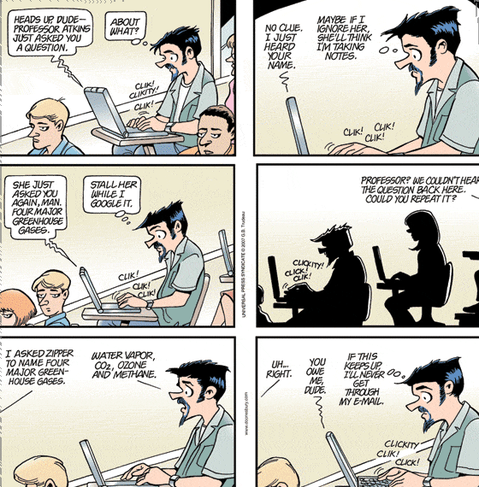
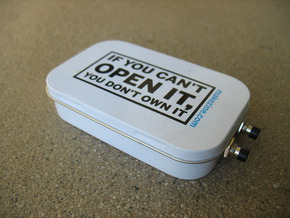
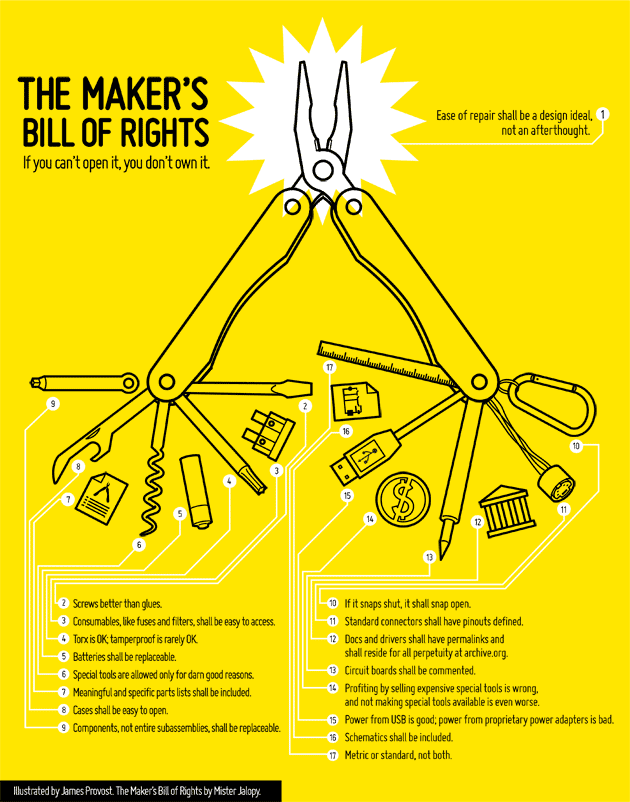
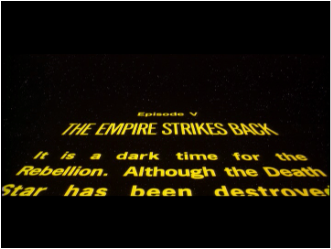
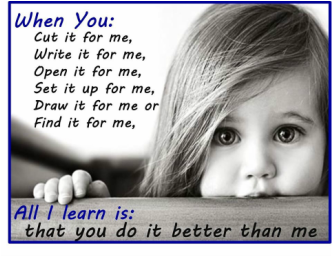

 RSS Feed
RSS Feed